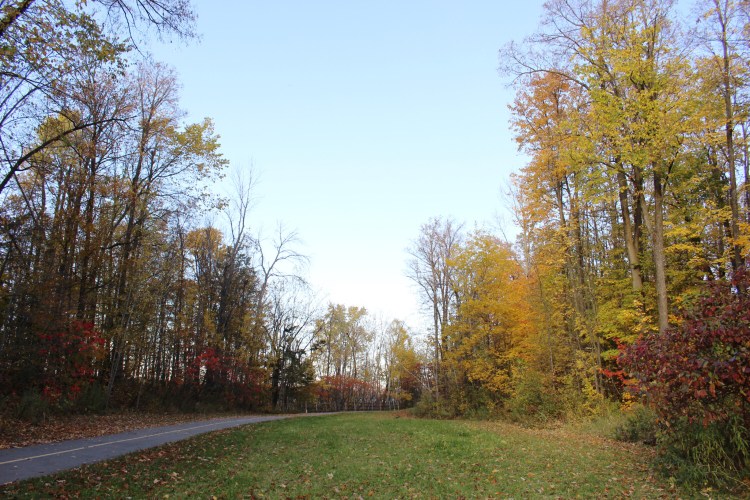The forest edge is the hot spot for action in the world of nature. A wide mix of plant material in those areas serves as a food and nesting sources for insects, birds and other members of the animal kingdom. During an online class last month, two horticulturists from Coastal Maine Botanical Gardens in Boothbay, discussed the importance of the forest edge.
Forest edges are everywhere: where highways meet woodlands, where lakes and streams meet banks and shorelines, where farm fields and suburban lawns meet the forest.
All forest edges are not the same. Some are hard edges, such as a road shoulder or the spot where the mowed farm field or lawn meets the trees. Soft edges form where mowing is less frequent, allowing small trees, shrubs and perennials to seed themselves or sprout from roots, spreading out from the forest to the field.
“A hard edge often softens later,” horticulturalist Andy Brand said during the class, which was co-sponsored by the botanical gardens and the Maine Landscape & Nursery Association.
We are lucky in the diversity of our forest edges. “In Maine, we have a beautiful mix of both deciduous and coniferous materials,” horticulturalist Irene Brady Barber noted. In contrast, Southern New England, she added, has mostly hardwoods.
A fully developed forest edge has seven different layers: roots, vines, ground covers, herbaceous perennials, shrubs, the lower trees and the tall trees, in that order.
Property owners can maintain a forest edge by what Brand called “bush hogging,” a term for mowing the area every five years or so to cut down trees before they become too big. But a little further editing may be fruitful.
Removing invasive plants should be a major part of that editing. In at least one of the photos of forest edges that Brand and Barber showed, oriental bittersweet was climbing some of the trees. Even if removing invasives by their roots is impossible, the plants should at the least be cut back before they set seed.
Some plants grow in forest edges more than others. Sumac – its botanical name is Rhus – is a native, fairly aggressive shrub that sprouts along edges, which is good because the plant provides food for chickadees and other birds – and humans, too. Native alders also grow rapidly, and can be removed over time.
Other natives, however, are worth encouraging along edges or, if they don’t show up on their own, even planting. Aralia, or wild sarsaparilla, spreads by its roots and is an excellent plant for edges. Though it will fight with the ferns that also want to grow there, Brand said, the two can make a good mix.
The choice of edge perennials is wide. Wood asters, blue violets and trout lilies are among the most common herbaceous perennials in forest edges. They drop their seeds naturally, and the seeds stay put until the conditions are right for them to sprout. Another useful edge plant, according to both Brand and Barber, is false Solomon’s seal, Smilacina racemoso; its fruit is consumed by a wide variety of birds and animals.
For most of their talk, the two speakers focused on shrubs and small trees that thrive at the forest’s edge. Mix hardwoods and conifers, Barber suggested. Plant American mountain ash, a plant both liked for its attractive fruit and usefulness as a food source for wildlife. Despite its name, the tress is not a real ash and won’t be damaged by the emerald ash borer. American mountain ash has only recently been available commercially, they noted.
Native viburnums are another excellent plant for forest edges. Among the many varieties are several that do well in Maine: witherod, lentago, acerfolium and dentatum. Both beneficial to wildlife and attractive, unfortunately, these viburnum also are susceptible to the viburnum leaf beetle.
Throughout the two-hour talk, I enjoyed listening to Brand and Barber discuss the importance of the plants and wildlife that live in the forest edge. But I was surprised that they neglected to mention a less attractive insect that is also frequently found there. Maybe they figured their audience – largely landscape professionals – was so familiar with it, they needn’t bother. But non-professional gardeners should be aware that the forest edge is also prime habitat for the deer tick, which spreads Lyme disease, as well as the mice that are also hosts to the tick.
That does not mean people should avoid mowing, pruning or otherwise tending the plants in the forest edge on their property. It does mean they should wear protective clothing while doing that work, and they should do thorough tick checks when they come inside.
That, really, is something they should do whenever and wherever they spend time outside.
Tom Atwell is a freelance writer gardening in Cape Elizabeth. He can be contacted at: tomatwell@me.com.
Send questions/comments to the editors.


